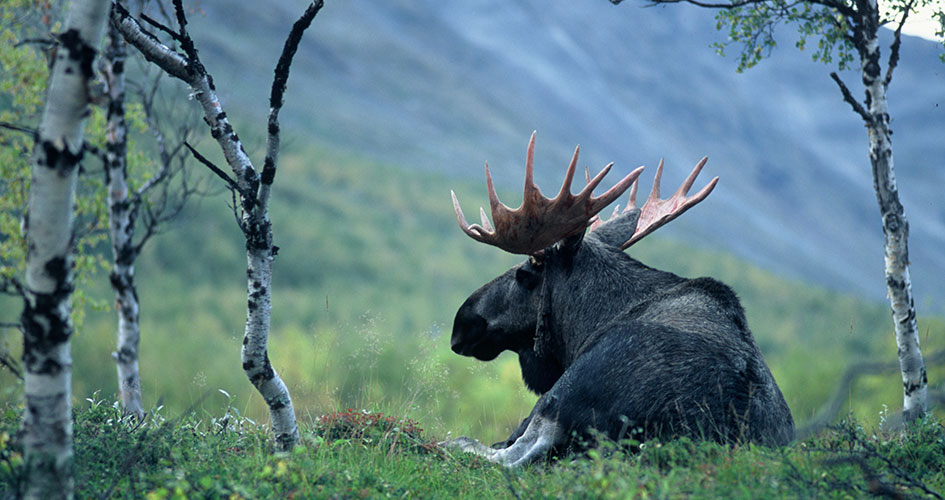 Foto: Kenneth Johansson
Foto: Kenneth JohanssonWildlife
The bear, this large, beautiful and shy animal, can be regarded as the area’s typical species, but you seldom get to see one.
On the other hand, you can see signs of the bears’ presence, such as scat, scent markings, torn up anthills or claw marks on trees.
Elk and roe deer
The elk are numerous, and they often make their way up onto the bare mountainside. Roe deer are here, even though in the wintertime it is a struggle for them to survive in an environment that borders on what they can tolerate.
Lynx have to help themselves to the forest’s animals in order to survive. Roe deer, mountain hare, capercaillie and black grouse are quarries the lynx likes to prey upon.
Other fauna
Red foxes, pine martens, otters, ermines and various weasels as well as beavers and various small rodents all have found a means of living here.
In rare cases some lone wolf has been known to leave its scent in the area. The chance of meeting up with a wolverine is small, but wolverines do exist here. In the wintertime with a little luck, you might see typical wolverine trails where the animal has bounded along across some mountain slope. Maybe it has been searching for the remains of some dead elk or been on the way to some of its many meat caches in the snow. A raven calling out or a golden eagle soaring high up in the sky often point the way to nourishing carcasses.
A few mountain hikers no doubt have been jarred from their daydreams in astonishment by a fiery little fellow suddenly standing there on its hind legs yapping angrily. That means it’s a lemming year. The mountain lemming is a remarkable little rodent that in certain years congregates in masses. The profusion of lemmings means plenty of food for rough-legged buzzards and other creatures that consume lemmings with gusto. This also reduces the risk that many of the mountain’s birds will become buzzard food. Thanks to the lemmings, the mountain teems with life in such years.
Birds of the forest
During a few short summer months, the forests resound with birdsong. Making themselves heard then are bramblings, chaffinches, redwings, song thrushes, chiffchaffs, willow warblers and many other birds visiting for the summer.
The capercaillie, black grouse, hazelhen and willow grouse all are here. They have no problem surviving the tough period from October to March.
You can hear the drumming of black, grey-headed and three-toed woodpeckers in the forests, and during good rodent years the hooting of both Tengmalm's owls and hawk owls.
In the spruce forest you can encounter the charming Siberian jay year-round.
The sparse summer vegetation still makes it possible for a number of specialists to find food. The meadow pipit and wheatear are common. The ptarmigan reveals itself through its typical screeching calls.
The golden plover's melancholy whistling follows the mountain hiker who happens to pass close to the bird's nest. With the smaller and more rare dotterel, it is the male who broods the eggs and raises the pair’s young by himself.
Where the environment is most barren, often in boulder-strewn terrain, you can come upon the little black-and-white snow bunting and ring ouzel.
Share with your friends
Share this page with your friends on Facebook, X (formerly Twitter), Google+ and e-mail.





